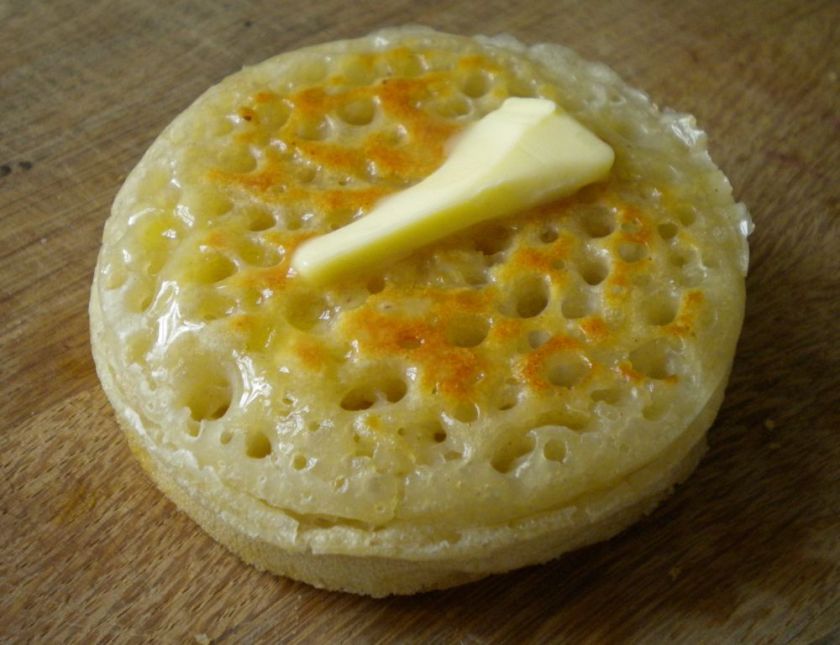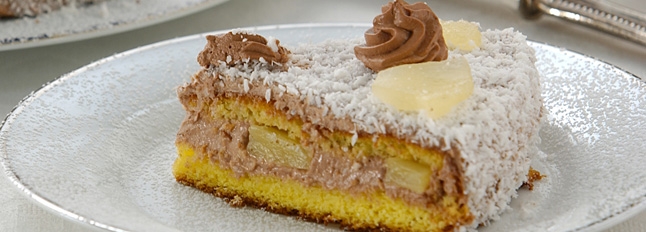English crumpets are generally circular, roughly 8 centimetres (3 in) in diameter and 2 centimetres (3⁄4 in) thick. Their shape comes from being restrained in the pan/griddle by a shallow ring. They have a characteristic flat top with many small pores and a chewy and spongy texture. They may be cooked until ready to eat warm from the pan but are frequently left slightly undercooked so that they may be cooled and stored before being eaten freshly toasted. They are often eaten with a spread of butter or an alternative, such as jam, honey, chocolate spread, margarine, golden syrup or yeast extract.
A Scottish crumpet is essentially a pancake cooked in a slightly different way, made from the same ingredients as a Scotch pancake, and is about 180 millimetres (7 in) diameter and 8 millimetres (0.3 in) thick. They are available plain, or as a fruit crumpet with raisins baked in, usually fried in a pan and served with a fried breakfast – they are also sometimes served with butter and jam. The ingredients include a leavening agent, usually baking powder, and different proportions of eggs, flour, and milk which create a thin batter. Unlike a pancake, they are cooked to brown on one side only, resulting in a smooth darker side where it has been heated by the griddle, then lightly cooked on the other side which has holes where bubbles have risen to the surface during cooking. It bears little resemblance to the English crumpet.

CRUMPETS
Ingredients
Flour – 225gms
Atta – 225gms
Salt – 10gms
Milk & Water – 600ml
Oil – 30ml
Sugar – 15gms
Yeast – 15gms
Soda-bi-carb – 2.5gms
Warm Water – 120ml
Procedure
1) Lightly grease a griddle or a heavy based frying pan and 4×8 plain pastry cutters.
2) Sift the flours and salt together into a large bowl and make a well in the center. Heat the milk & water, mix oil & sugar until lukewarm mix the yeast with 150ml of this liquid.
3) Add the yeast mixture and remaining liquid to the center of the flour and beat vigorously for about 5mins until smooth and elastic. Cover and allow to rise for about 1 ½ hours till the mix is bubbly and about to fall.
4) Dissolve the soda in the lukewarm water and stir into the batter. Re-cover for 30min.
5) Place the cutter on the griddle and warm on a medium heat.
6) Pour the batter into pastry cutter till 1/4th its height.
7) Cook over a gentle heat for 6-7 min. the top should be dry with tiny holes.
8) Serve warm with jam or butter.

